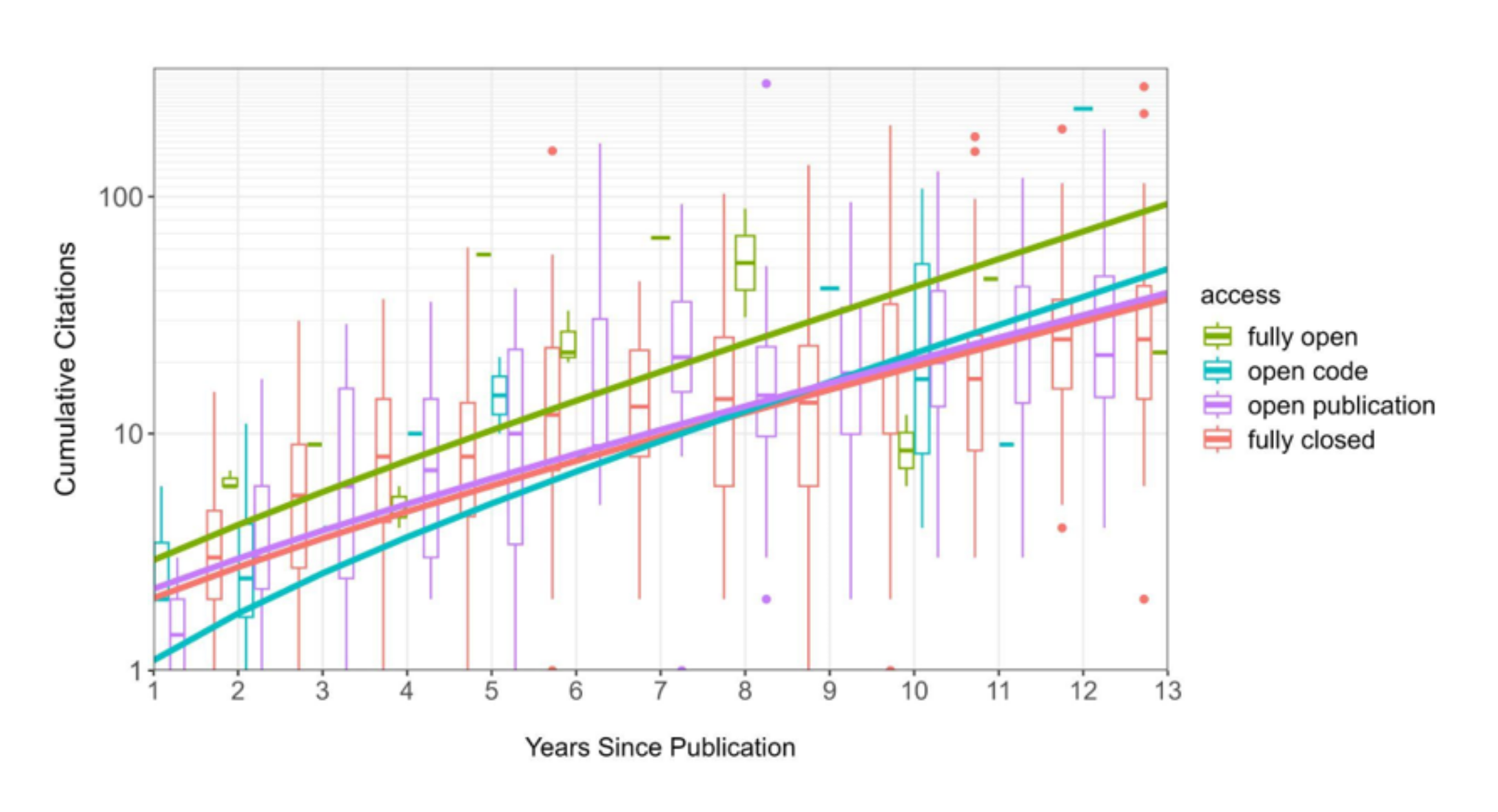Sharing Code & Getting Credit
Session 10
October 3, 2024
Why share code?
Papers with open code are cited more

Getting credit for your code
Make it easier for people to cite your code
Provide a CITATION file on GitHub
Archive to get a digital object identifier (DOI)
Include DOI and/or citation in your paper’s Data/Code Availability Statement
CITATION.cff
A
CITATION.cfffile contains citation information written in YAMLAdding a
CITATION.cfffile to your repo…Puts a “cite this repository” button on GitHub
Helps code archive tools fill out metadata correctly when you archive your repo
Learn more and create your own: https://citation-file-format.github.io/
See example here
Options for archiving
| Service | Versioned DOIs? | Free? | GitHub integration? | Notes |
|---|---|---|---|---|
| Zenodo | Yes | Yes | Yes | Backed by CERN, built with code and data in mind |
| Dryad | Yes | No, but some publishers cover cost | No | Intended for data, not code. Partners with Zenodo |
| Figshare | Yes | Yes | Yes | Can’t choose your license |
| UA ReDATA | Yes | Yes (for UA researchers) | No | University of Arizona Libraries |
Zenodo Archiving Demo
- Log in to sandbox.zenodo.org using GitHub1
- In drop-down menu with your username, select “GitHub”
- Find your repo in the list and flip the switch next to it
- Go to your repo on GitHub and make a release
- On sandbox.zenodo.org, get markdown to add a badge to README.md
When to archive?
No hard rules on this, but my preference:
- Just before submitting a manuscript: release v 0.1.0
- After responding to reviewers or re-submitting: increment “minor” version, e.g. v 0.2.0
- After acceptance: release v 1.0.0
Reproducible computational environments
Congrats! Your code is reproducible! But what about ….
in 3 years when an R package is updated with breaking changes?
on a different operating system with different versions of system libraries?
Capture the computational environment for ultimate reproducibility
Reproducible Environments With renv
The
renvpackage records R packages and their versions used in your projectProjects are isolated with their own set of packages
Can restore exact versions of packages recorded
Using renv
Exercise
Install renv and activate it for a project with renv::init(). Inspect the files that were created.
If you change your mind …
To deactivate renv, run renv::deactivate(). To also remove all the files it created, run renv::deactivate(clean = TRUE) instead.
Limitations of renv
Only tracks R packages 1
Can’t reproduce operating system or system libraries
Sometimes quite annoying to use (but it’s getting better!)
More Reproducibility with Docker
Docker containers…
Are isolated “virtual machines”
Run Linux regardless of the host machine OS
Can be built with specific versions of OS, system libraries, and R packages (using
renv)Can be downloaded and run from the command line
Hold up, what is reproducibility again?
There is a reproducibility trade-off for using renv and Docker—robust computational reproducibility but harder for novices to reproduce
If you use these tools, provide:
- Instructions on how to run code
- Where to go for help troubleshooting
- Ways to access your code without extra layers
Resources
Next week
Tuesday 10/18: Drop-in co-working session.
- Come and work on your reproducibility colloquium project/presentation
Thursday 10/10: Reproducibility Colloquium!
- Invite your lab-mates, PI, friends!
